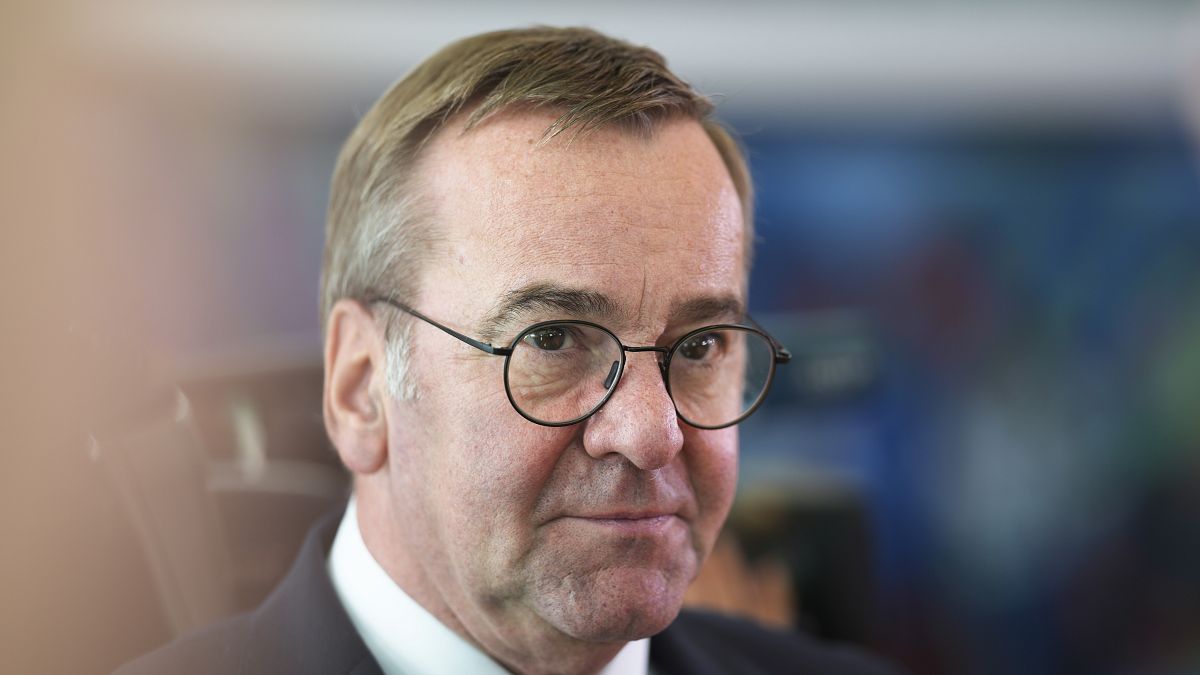Lifestyle
How do you solve a crime at a retirement home? Get 'A Man on the Inside'

Ted Danson stars as a widowed retiree who goes undercover to solve a crime in a retirement community in A Man on the Inside.
Colleen E. Hayes/Netflix
hide caption
toggle caption
Colleen E. Hayes/Netflix
While researching for his new Netflix comedy series, A Man on the Inside, TV producer Michael Schur visited a string of retirement communities throughout California. He expected them to be sad places, but what he found surprised him.
These were “flourishing communities of people who were very happy to be with each other and to be part of a community,” Schur says. “They were places of happiness and joy, largely.”
A Man on the Inside centers on a widowed retiree, played by Ted Danson, who goes undercover to solve a crime in a retirement community. The series was inspired by the 2020 Chilean documentary called The Mole Agent.
“What was remarkable to me about the documentary, among other things, is that everyone I know who saw it had the same exact feeling, which was ‘I should call my mom,’ or ‘I need to call my grandpa,’ or ‘I should hang out with my kids more,’” Schur says. “And it’s a rare piece of art, I think, that can cause everyone to have such a warm and positive feeling. So my longtime producing partner Morgan Sackett said, ‘We should remake that and have Ted [Danson] play the main part,’ and as soon as he said it, I just knew he was right and that there was a very good, slightly fictionalized show that could hopefully give people that same feeling.”
Schur’s previous TV credits include writing for The Office, co-creating and writing for Parks and Recreation and Brooklyn Nine-Nine in addition to creating and writing for The Good Place. With all those hits, it’s clear that Schur could retire himself, but he says he enjoys what he does too much to stop.
“Why wouldn’t I work? It’s sitting in a room with a dozen really funny people writing stories and making jokes,” he says. “I can’t believe I get to do this. It’s a miracle. It’s incredible. And I do it because I love it.”
Interview highlights
On how comedy helped him be less of a rule-follower
I have a very specific memory of being in kindergarten and being on the playground … and the teacher came out and went like, “OK, everybody line up.” And I immediately walked over and stood right in front of her. And the other kids were like still milling around and goofing around and laughing and playing with foursquare balls and stuff. And I remember thinking, like, What are they doing? This is insane. Like the teacher just said, line up and they’re not lining up. …
My first job was at Saturday Night Live. Saturday Night Live is a big, messy swirl of craziness. Like it’s a big rambling, 90-minute-long live variety show where part of the fun is that people are making mistakes and coloring outside the lines. … That was actually really good for me to be in a place at the beginning of my career where it was like, this is not rigid. This world is not about following rules so much.
On getting the idea for The Good Place, which explores moral philosophy
I used to play this game as I drove around in traffic in L.A. where someone would cut me off on the freeway or we would be in traffic and someone would pull onto the shoulder and speed past me and cut the line, and as a way of trying to stem off what you would call road rage, I would play a game in my head where I would say, “That guy just lost 10 points.” I was imagining a scenario in which there was some kind of omniscient observer of human behavior. And I satisfied my own anger or displeasure with other people by imagining that that cost them in some cosmic way.
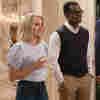
And so after Parks and Recreation ended and Brooklyn Nine-Nine was up and running … NBC very kindly said, you can sort of do whatever you want and we’ll give you at least one season on the air. So I had been thinking about that game I played in my head, about other people and about myself and judging my own behavior and doing things that I knew were maybe slightly iffy and how many points I lost or how many points I gained when I did certain things. And so that became the idea that I just liked the most of the ideas that I had. And I just pursued that and thought, alright, it’s going to be weird. I’m going to do a half-hour comedy show about moral philosophy. But I don’t know, maybe it’ll work. I just sort of rolled the dice and I’m glad I did because the experience of working on it was wonderful.
On developing the concept for Parks and Recreation

I grew up in a pretty sleepy suburban town in the Northeast. And like, the government was great. I loved the government. Like the government was what filled the swimming pool and the public park that I swam in and organized the Little League. And, you know, my public school was great and my teachers were great. And I grew up kind of not understanding this weird demonization of the government. … I’m older now, and I understand that the government has a lot of problems, but I just never understood why it was like this demonized force in America. And so I kind of thought like … in the same way that [The Office‘s] Dunder Mifflin was a fictional private sector company, we could essentially create an entirely fictional town and talk about it through the world of the public sector and just show what I have always believed, which is like the government is just a bunch of people in an office who try to do stuff to that will make the town better.
On Parks and Recreation reflecting the Obama years
I think that that show is very much of a time and place. There are people who use revisionist history to claim that it was always hopelessly naïve or something. But that is what the mood of the country at the time we were making that show … It wasn’t wide-eyed optimism, it was careful optimism. Like Leslie Knope was extremely optimistic about the possibility of making people’s lives better. But she was also constantly confronted with the impossibility of that because people are grouchy. They didn’t want her to do whatever she was doing. They were throwing obstacles in her way. … We weren’t pretending that everything was rosy and great. What we were trying to say was, it’s a better way to go through life, to be hopeful and optimistic than it is to be pessimistic.
YouTube
On making fun of NPR on Parks and Recreation
There were a number of times that Leslie went on the local NPR station over the years, and it was just our chance to, like, make the little jokes about the reality of listening to NPR. … But it was always fun to do NPR jokes. It was always a favorite exercise. We had to kind of stop ourselves from having her go on too much, because if we could have done it in every episode and had plenty to make fun of — lovingly.
On how the shift from network to streaming has changed TV writing
The biggest change, obviously, is just the shift to the streaming model. You know, The Office, we did 28 episodes one year, I think, or maybe 30. The typical season was 22 episodes or 24 episodes. And now a season of TV is eight half hours usually, or maybe 10. And that just completely changes the way you tell stories, right? The advantage TV always had over movies was you could, in success, watch a set of characters live and change and grow over many, many, many years.
Like, people still watch Friends because … you’re watching people go from their mid-20s to their mid-30s and they have relationships and those relationships get tangled and complicated and end. … During COVID people revisited old shows that had 200 episodes like Friends and Cheers and whatever. And you could sit during COVID and watch an episode every night for five or six months. And that was incredibly valuable and I think brought people a lot of comfort. And that’s what we’re losing. And that’s what I mourn the most about the new system is we’re just sort of losing what, to my mind, was the inherent advantage that TV storytelling had over movies or anything else.
Lauren Krenzel and Susan Nyakundi produced and edited this interview for broadcast. Bridget Bentz, Molly Seavy-Nesper and Beth Novey adapted it for the web.

Lifestyle
Shohei Ohtani Unanimously Wins MVP Award In First Season With Dodgers

Shohei Ohtani keeps doing things no baseball player has ever done.
The Dodgers superstar unanimously won the National League’s Most Valuable Player award Thursday, becoming the first full-time designated hitter to take home the hardware.

In his first season with the Dodgers, Ohtani became the first big leaguer to have 50 home runs and 50 stolen bases in a single season. Ohtani’s 54 homers were top in the NL and his 59 stolen bases ranked second in all of MLB.
Shohei was also second in the NL with a .310 batting average, and he lead the league in on-base percentage, slugging percentage and OPS. In other words, he was the best hitter by far.
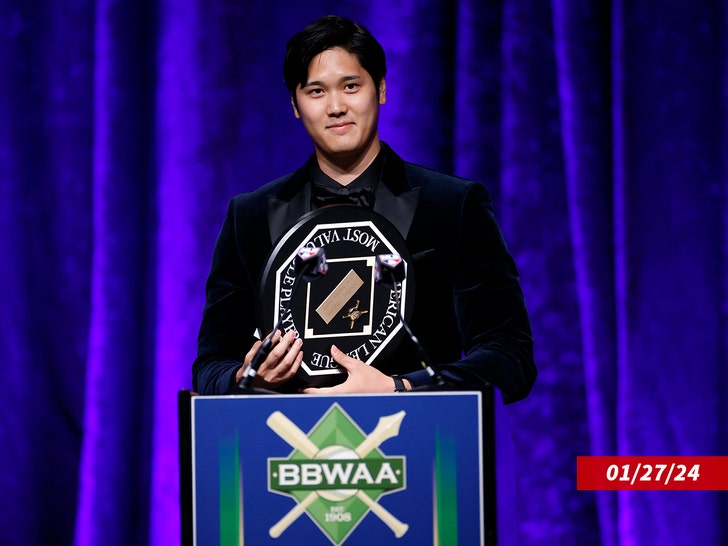
It’s the third MVP award for Ohtani, who was twice named AL MVP when he was playing across town with the Angels.
Difference is, Ohtani was pitching and hitting back then … and this year he was limited to being a DH as he recovered from off-season surgery on his pitching elbow.
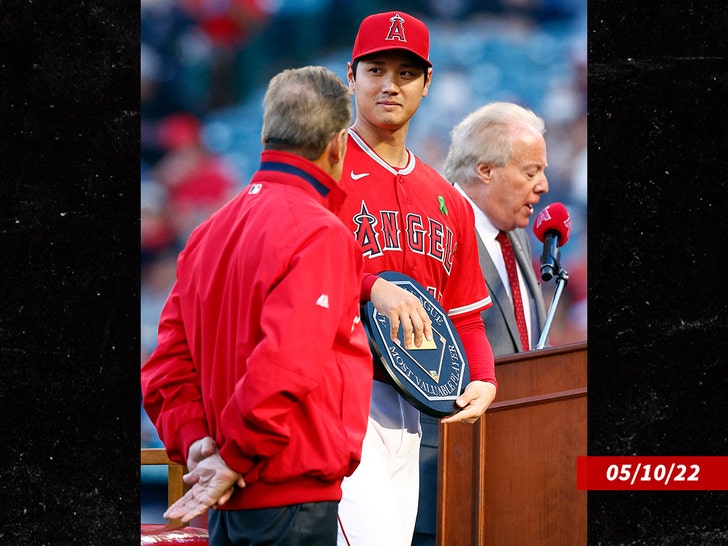
Just goes to show how dominant Ohtani was in the batter’s box in 2024 … and how much of a difference-maker he was for the Dodgers, who finished with the best record in MLB and ultimately won the World Series.
With the win, Ohtani joins Hall of Famer Frank Robinson as the only players to earn MVP in both the AL and NL. He’s also the first player to win the award unanimously three times.
Lifestyle
A duct-taped banana sells for $6.2 million at an art auction

A woman looks at artist Maurizio Cattelan’s piece of art Comedian during an auction preview at Sotheby’s in New York on Nov. 11, 2024.
Eduardo Munoz Alvarez/AP
hide caption
toggle caption
Eduardo Munoz Alvarez/AP
NEW YORK — A piece of conceptual art consisting of a simple banana, duct-taped to a wall, sold for $6.2 million at an auction in New York on Wednesday, with the winning bid coming from a prominent cryptocurrency entrepreneur.
Comedian, by Italian artist Maurizio Cattelan, was a phenomenon when it debuted in 2019 at Art Basel Miami Beach, as festival-goers tried to make out whether the single yellow piece of fruit affixed to a white wall with silver duct tape was a joke or cheeky commentary on questionable standards among art collectors. At one point, another artist took the banana off the wall and ate it.
The piece attracted so much attention that it had to be withdrawn from view. But three editions sold for between $120,000 and $150,000, according to the gallery handling sales at the time.
Five years later, Justin Sun, founder of cryptocurrency platform TRON, has now paid more than 40 times that higher price point at the Sotheby’s auction. Or, more accurately, Sun purchased a certificate of authenticity that gives him the authority to duct-tape a banana to a wall and call it Comedian.
The piece attracted heavy attention at the busy auction at Sotheby’s, with attendees in the crowded room holding up phones to take photos as two handlers wearing white gloves stood at both sides of the banana.
Bidding started at $800,000 and within minutes shot up to $2 million, then $3 million, then $4 million, and higher, as the auctioneer, Oliver Barker, joked “Don’t let it slip away.”
“Don’t miss this opportunity,” Barker said. “These are words I’ve never thought I’d say: Five million dollars for a banana.”
The final hammer price announced in the room was $5.2 million, which didn’t include the about $1 million in auction house fees, paid by the buyer.
In a statement, Sun said the piece “represents a cultural phenomenon that bridges the worlds of art, memes, and the cryptocurrency community.” But he said the latest version of Comedian won’t last long.
“Additionally, in the coming days, I will personally eat the banana as part of this unique artistic experience, honoring its place in both art history and popular culture,” Sun said.
Sotheby’s calls Cattelan “among Contemporary Art’s most brilliant provocateurs.”
“He has persistently disrupted the art world’s status quo in meaningful, irreverent, and often controversial ways,” the auction house said in a description of Comedian.
The sale came a day after a painting by the Belgian surrealist René Magritte sold for $121.2 million, a record for the artist, at a separate auction.
The Empire of Light, an eerie nighttime streetscape below a pale blue daytime sky, sold Tuesday as part of Christie’s sale of the collection of interior designer Mica Ertegun, who died last year at age 97.
The sale lifts Magritte into the ranks of artists whose works have gone for more than $100 million at auction. Magritte is the 16th member of the club, which also includes Leonardo da Vinci, Pablo Picasso and Andy Warhol, according to the market analyst firm Artprice.
The Empire of Light, executed in 1954, was one of 17 versions of the same scene that Magritte painted in oil. Marc Porter, chairman of Christie’s Americas, called the sale “a historic moment in our sale room.”
The $121.2 million price included the auction house’s fees. The buyer was a telephone bidder whose identity was not disclosed.
Lifestyle
This L.A. ceramist's vessels offer joy in uncertain times. Thank her 'weird imagination'

Linda Hsiao was standing at a weathered work table inside her ceramics studio in Altadena. It was the day after Halloween, and her two children, Saben Taylor, 5, and Wawona Hsiao, 3, worked alongside her, hand-sculpting clay vessels as wild as a child’s imagination. Like Saben’s handprints in the concrete patio outside the studio, Hsiao’s own wildly creative imprint is clear in the whimsical vessels that line the shelves of the former two-car garage: from long-beaked toucan pitchers and owl juicers to Japanese daruma wishing dolls and Venus of Willendorf lady tiki cups.
“I’ve always had a weird imagination,” Hsiao said as she continued to work on an emerging large-scale vase. “I like the idea of creating mythical creatures that are a hybrid. They are ambiguous and not quite what you would assume. I wish they existed.”
“Are we going to school today?” Saben asked.
“Yes,” Hsiao replied, to his disappointment.
Ceramist Linda Hsiao and her children Wawona Hsiao, 3, and Saben Taylor, 5, get to work in the studio behind their home in Altadena.

“They know I enjoy what I do,” Hsiao said of her children and working from home.
“Many of my vessels are inspired by my kids,” Hsiao said after Saben and Wawona left for school with their father, architect Kagan Taylor. “I feel like I’m constantly being filled … and emptied.”
Hsiao grew up in Laguna Hills, where her parents, Taiwanese immigrants, ran a farm specializing in Chinese fruits and vegetables such as bok choy and bamboo shoots. Her proximity to the ocean and their farm inspired her love of nature, which she describes as “a leading force” in her life. Looking back, she laughs as she recalls explaining to her elementary school teacher that “watermelons were not just red, but yellow too.” This love for nature is evident in her ceramics, which often feature elements of the natural world.
From a young age, Hsiao, now 42, was drawn to working with her hands and taking art and sculpting classes. Her parents wanted to support her and sent her to a summer program at Parsons School of Design in New York City as a teenager. “My parents thought, ‘That’ll get New York out of her system,’” she said with a chuckle. But it only fueled her passion further.

Hsiao takes holiday ornaments out of her kiln in her studio.

Whimsical ceramic creatures are designed to hold birthday candles.
After high school, Hsiao attended Pratt Institute in Brooklyn, where she studied industrial design. Following her graduation in 2004, she dedicated nearly a decade to designing eyewear, often spending 12 hours a day in front of a computer. This intense focus left her feeling “dizzy” and craving a more hands-on creative outlet.
So she joined a few community studios in Brooklyn and started doing ceramics. However, living in New York was hard, and she missed gardening and the easy access to nature in California.
After nine years, she moved back to California, where she took ceramics classes at Saddleback College and Glendale Community College at night while freelancing — designing everything from eyewear to jewelry for big brands to snowboarding gear — during the day.
A hand-building class with ceramics artist and teacher Biliana Popova at Glendale Community College changed her career path. “I didn’t take to wheel throwing because I didn’t want things to be perfectly symmetrical,” Hsiao said. “I always wanted to manipulate my forms and change them. My hands always wanted to sculpt. After I took a hand-building class, I never looked back.”

“I always wanted to manipulate my forms and change them,” Hsiao said. “My hands always wanted to sculpt.”


Hsiao’s ceramics are sweet and quirky — tiki cups, Japanese daruma wishing dolls, tiny creatures and bird pitchers and creamers.
Later, after she met her husband — and before they had children — the couple collaborated on a series of handmade wooden baby rattles they sold as part of Knotwork LA, and she began to do ceramics out of their home in Highland Park. (They have temporarily stopped making the rattles but hope to re-stock them again as the kids get older.)
“Knotwork LA was created as an outlet to identify the work we do in our spare time,” she said. “Precious pieces of wood saved from other projects or found while hiking, ideas that came to us in the middle of the night and a desire to create beautiful, useful things.” After juggling freelance work and producing ceramics in the evenings and on weekends for 10 years, she decided to take a leap of faith and do ceramics full-time in 2016.
She started with an order of more than 800 plates and dishes for Curtis Stone’s restaurant, Gwen, in Hollywood.
Since then, her studio has evolved as her work has become more sculptural, and her inventory has become more broad.

Ceramic bird pitchers are inspired by nature.
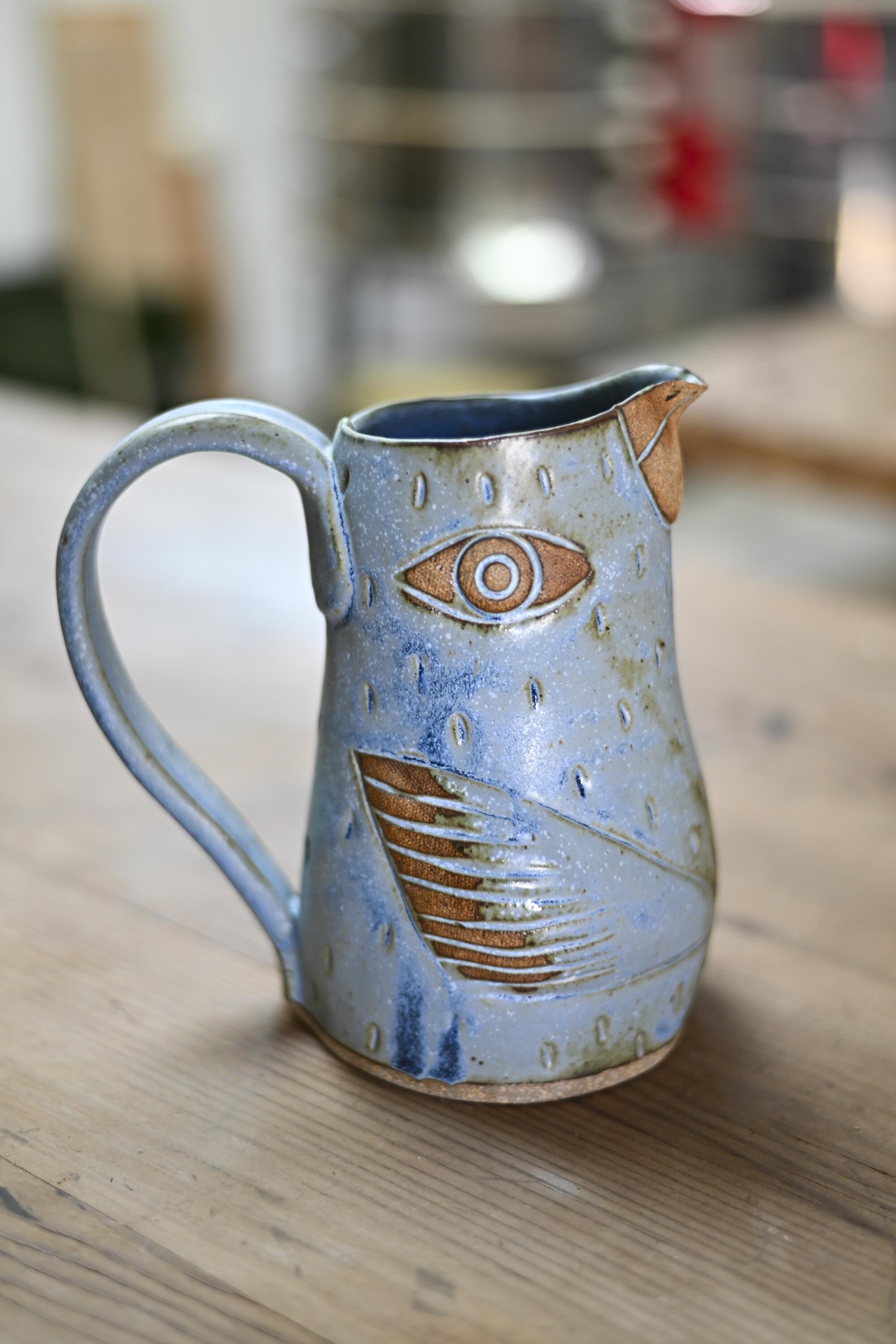
A completed ceramic bird pitcher in blue.
Hsiao’s handmade ceramics and figurines, many of which she cuts out using a cardboard template after rolling the clay flat with a slab roller, exhibit a playful style that is thoroughly her own. “It’s kind of like sewing,” she said of using patterns. “I cut them out with a knife and mold and sculpt them afterward.”
Her works are filled with whimsy and joy, including a collection of platters and plates featuring inlaid porcelain flowers, vaguely defined creatures that hold birthday candles, penguin pitchers and buddhas. Although she has made lamps, she prefers to focus on affordable goods that can go straight into someone’s home for them to enjoy. “I like having a price point that is somewhat attainable for most people,” she said. “Lamps are expensive.”
Her dream was always to have a studio at home, invest in a kiln and save money on studio expenses. After purchasing their first home in 2020, the couple spent eight months redoing the garage, which had a collapsed roof, last year. The studio is now an artist’s dream, with two kilns, ample space to work, storage and a dedicated area where Hsiao can pack her orders.
“I was using our bedroom as our showroom before,” she said. “It was rough.”

Sketches of empty vessels hang on the wall of Hsiao’s studio.

“The first thing my mom bought me for my studio was a slab roller,” Hsiao said. “She said, ‘I don’t want you to hurt yourself. This is my gift for your studio.’”
But even though Hsiao is working from home most days, meeting people in person has always been a highlight of having a small business. In order to do even more of that, she, Heather Praun of Plant Material and designer Bianca D’Amico of Chaparral Studio launched a semi-annual craft show at Plant Material’s Altadena location. They’ve held “about five” of them so far; the next takes place Dec. 14 and 15. “The whole community shows up,” she said, smiling. “I’ve been lucky enough to participate in some of the most vibrant collections of makers throughout the years and made friends with many. It was a delight after moving to Altadena to find that so many of the makers have found themselves here raising families, going to the same schools and parks.”
“How she prioritizes creativity in all aspects of her life has always inspired me,” D’Amico said. “There is endless thought and time poured into her work, but she exercises that part of herself in every aspect of her life. Even dinner [at] home has a crafty element: food tossed colorfully into various homemade bowls, the kids always helping make the food and nothing needs to match; it’s all about the time spent together. There is a sense that life is happening NOW, and she is engrossed in the moment.”

“People can see that my work is hand built,” Hsiao said.

Hsiao said that balancing a small business in the backyard can be challenging while raising two young children, but she appreciates that she can return to the studio after she has put the kids to bed. “I’ve learned to love the quiet of working in the evenings, [and I ] try to take breaks on the weekends and fully spend time with the kids,” she said. “The balance is tough, but my kids see me trying to sneak in work since my studio is at home and always ask to help. They know I enjoy what I do, and I have no doubt they will spend more time with me in my studio as they get older.”
Despite feeling like an empty vessel sometimes — “much of it feels like there are never enough hours in the day,” she said — Hsiao knows time spent with her kids is fleeting. As she figures out what work/life balance means for her family, she often goes back to something artist and mother Megan Whitmarsh shared with her: “You will never regret all the work you didn’t make while your children were little because you decided to be a present and loving parent.”
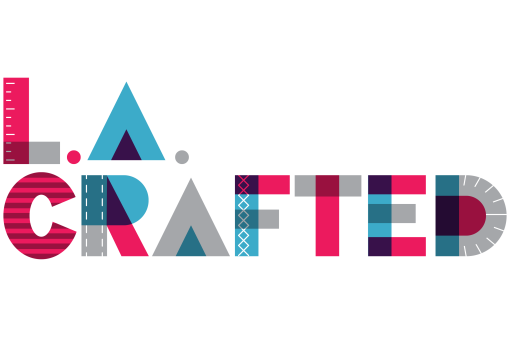
In this series, we highlight independent makers and artists, from glassblowers to fiber artists, who are creating and producing original products in Los Angeles.
-
Business1 week ago
Column: OpenAI just scored a huge victory in a copyright case … or did it?
-

 Health1 week ago
Health1 week agoBird flu leaves teen in critical condition after country's first reported case
-

 Business5 days ago
Business5 days agoColumn: Molly White's message for journalists going freelance — be ready for the pitfalls
-
World1 week ago
Sarah Palin, NY Times Have Explored Settlement, as Judge Sets Defamation Retrial
-

 Politics4 days ago
Politics4 days agoTrump taps FCC member Brendan Carr to lead agency: 'Warrior for Free Speech'
-

 Science2 days ago
Science2 days agoTrump nominates Dr. Oz to head Medicare and Medicaid and help take on 'illness industrial complex'
-
/cdn.vox-cdn.com/uploads/chorus_asset/file/25739950/247386_Elon_Musk_Open_AI_CVirginia.jpg)
/cdn.vox-cdn.com/uploads/chorus_asset/file/25739950/247386_Elon_Musk_Open_AI_CVirginia.jpg) Technology4 days ago
Technology4 days agoInside Elon Musk’s messy breakup with OpenAI
-

 Lifestyle4 days ago
Lifestyle4 days agoSome in the U.S. farm industry are alarmed by Trump's embrace of RFK Jr. and tariffs











